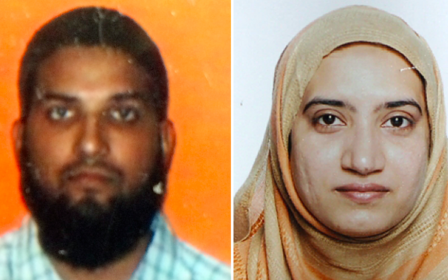San Bernardino shooter's US visa vetting highlights weaknesses: Report

The US visa interview of one of the San Bernardino shooters, who came from Pakistan, did not reveal any irregularities or trigger more extensive investigation, a source familiar with the case has told Reuters.
US authorities conducting the May 2014 interview with Tashfeen Malik, who shot and killed 14 people with her husband, Syed Rizwan Farook, during a 2 December Christmas party, could have sought more information from US and Pakistan security agencies.
But without any previous militant activity, Malik – who had apparently pledged allegiance to the Islamic State group in a Facebook post after arriving in the US - passed through without notice, highlighting weaknesses in the US immigration system, current and former US officials told Reuters.
How Malik obtained her visa is the current subject of several Congressional committee investigations, ordered after the California rampage and raising questions whether the visa process should be more rigid.
The interview record, according to Reuter’s source familiar with her State Department file, offers one paragraph of information about Malik, referring to documents she needed to prove she had a relationship with Farook, including a photo of their engagement ceremony, emails and financial documents, but no mention of her political or religious views.
While some lawmakers have reportedly suggested that visa applications like Malik’s require an examination of social media postings, former officials say one of the main challenges is sheer workload.
"One cannot expect US consular officers to conduct the equivalent of an FBI background investigation on every visa application,” Paul Pillar, a former CIA analyst, told Reuters. “The sheer volume of applications they must review would preclude doing so.”
A State Department official told Reuters that "all required procedures were followed" had been followed in Malik’s case.
Middle East Eye propose une couverture et une analyse indépendantes et incomparables du Moyen-Orient, de l’Afrique du Nord et d’autres régions du monde. Pour en savoir plus sur la reprise de ce contenu et les frais qui s’appliquent, veuillez remplir ce formulaire [en anglais]. Pour en savoir plus sur MEE, cliquez ici [en anglais].




